(Périgueux 1851 - 1936)
Jumilhac
Oil on canvas
H. 33 cm; W. 41 cm
Signed and dated July 1912 lower left. Located on the back.
Provenance: Private collection, Périgueux
Jean-Georges Pasquet was born in 1851, in Périgueux. After a childhood in Périgord that is very poorly documented, the young artist arrived in Paris and joined the School of Fine Arts, from which he graduated a few years later. He returned to his homeland in 1879 to take over the direction of the Municipal School of Drawing in Périgueux, and also became a drawing teacher at the Boys' and Girls' Teacher Training Colleges. A student of Gustave Boulanger, Jules Lefèvre and Jean-Joseph Benjamin-Constant, the painter sets up his easel on the banks of the Dordogne or the Isle to "tell a few memories" through realistic landscapes filled with gentleness. Through his style, the painter lets his compatriots see a great idea of his country and its origins. We find works stripped of artifice, representing inhabitants of the region, working their lands or simply strolling on paths. These paintings or drawings by Pasquet retrace the life of Périgord at the dawn and during the 20th century, always located in very specific places. He is one of the artists of the Périgueux School. This school, somewhat forgotten in the history of art, highlights the heritage and identity of the Périgord lands. Among the representatives, we find Jean-Louis Daniel, André Saigne, Georges Darnet, René Laforest, Roger Favard and André Prugent. This movement has as a common denominator a theme that stands out from the canons of the time: the landscape. "It is a school without a leader and without a dominant style, but which worked with extraordinary enthusiasm. They liked to tackle pieces of nature that we call here picadis." Jean-Michel Linfort The artist painted the Dordogne but not only, he traveled to Creuse and very regularly to Saint Georges de Didonne. There he painted the rivers, the sea, the ports, the bridges, the dunes and the forests. So many motifs that he knows how to transcribe and to which he brings life thanks to the bright colors and the movement given to his brush, to give relief to the landscapes. Jumilhac le Grand, near Thiviers, is not a land regularly painted by the artists of the region. However Pasquet produced at least two works there, including this one, dated July 1912, where he presents the magnificent castle from an unexpected angle. Indeed, this magnificent residence with its many slate towers stands in the middle of the village and is therefore often presented under the auspicious vision of its façade overlooking a vast square. Pasquet, for his part, went further, going into the Périgord forest to offer, not a view of the building, but a pure landscape. The castle of Jumilhac remains the subject, but becomes in this painting almost an anecdote in the undergrowth, always illuminated as only Pasquet knows how to do.


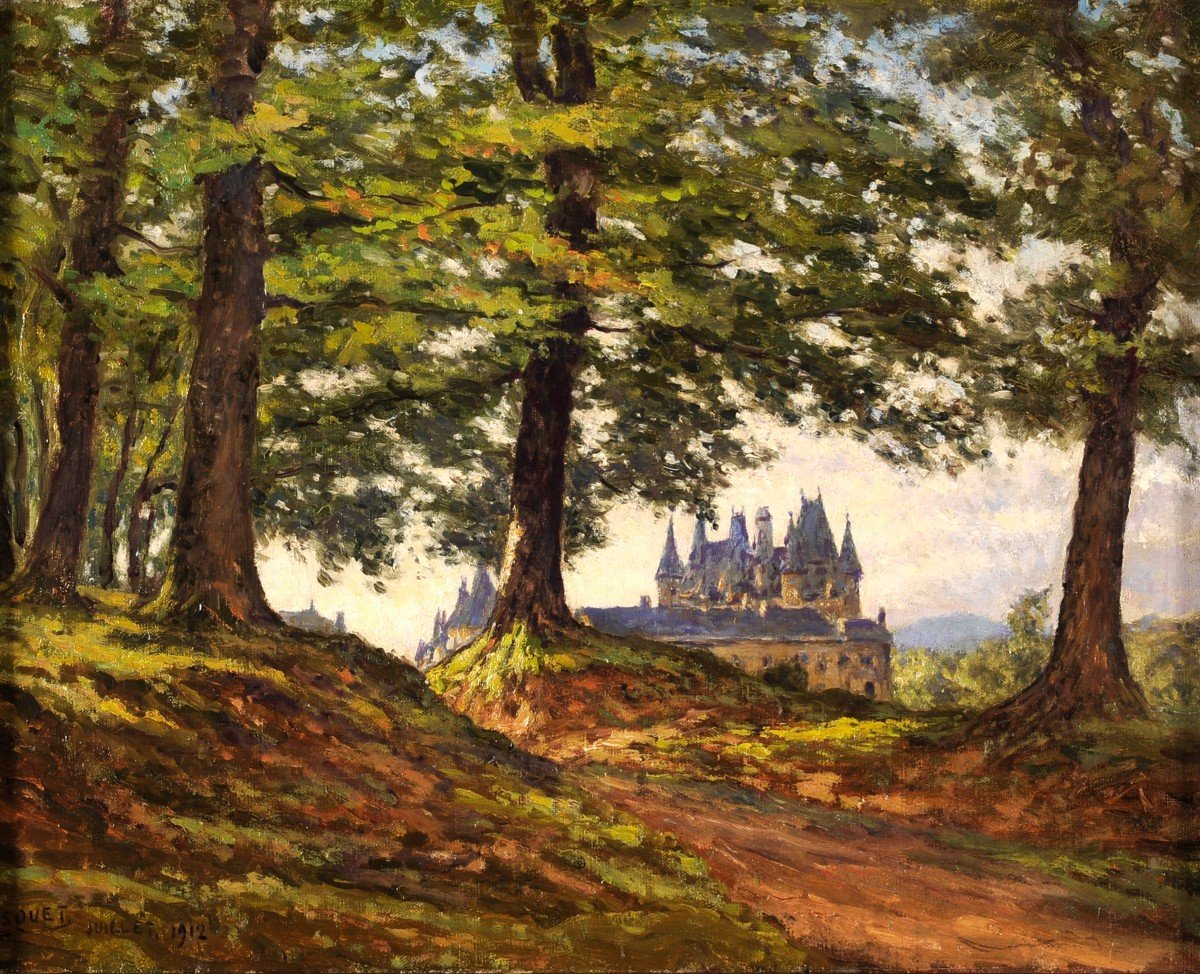
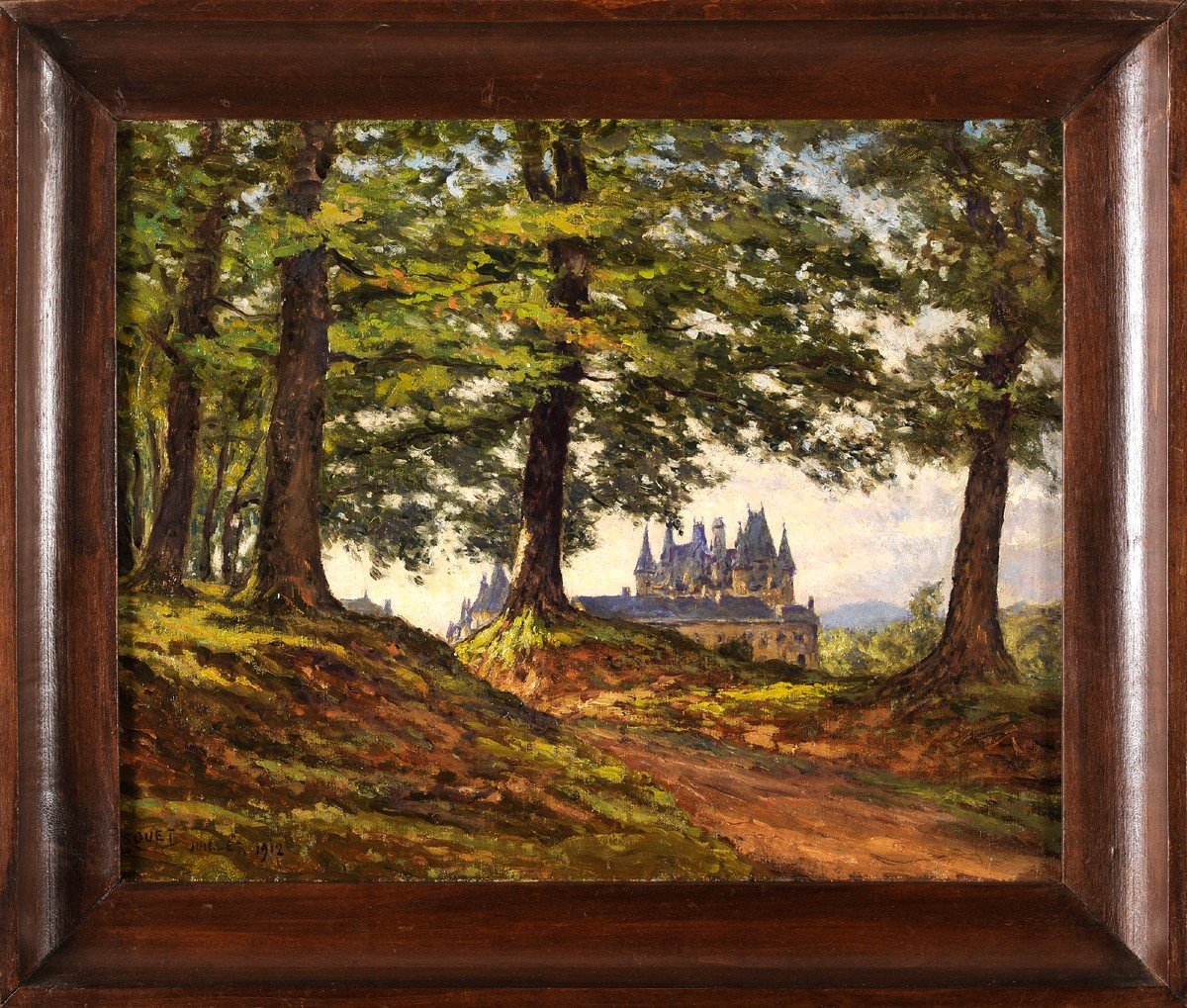
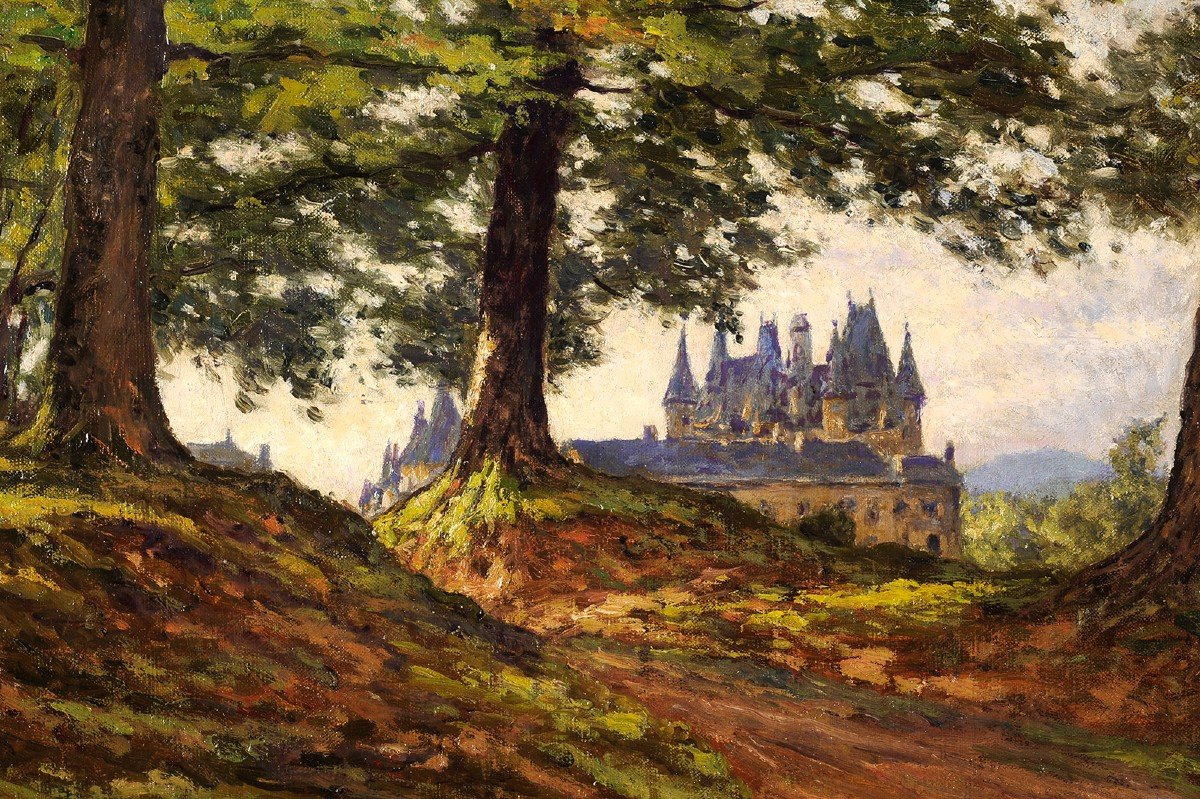
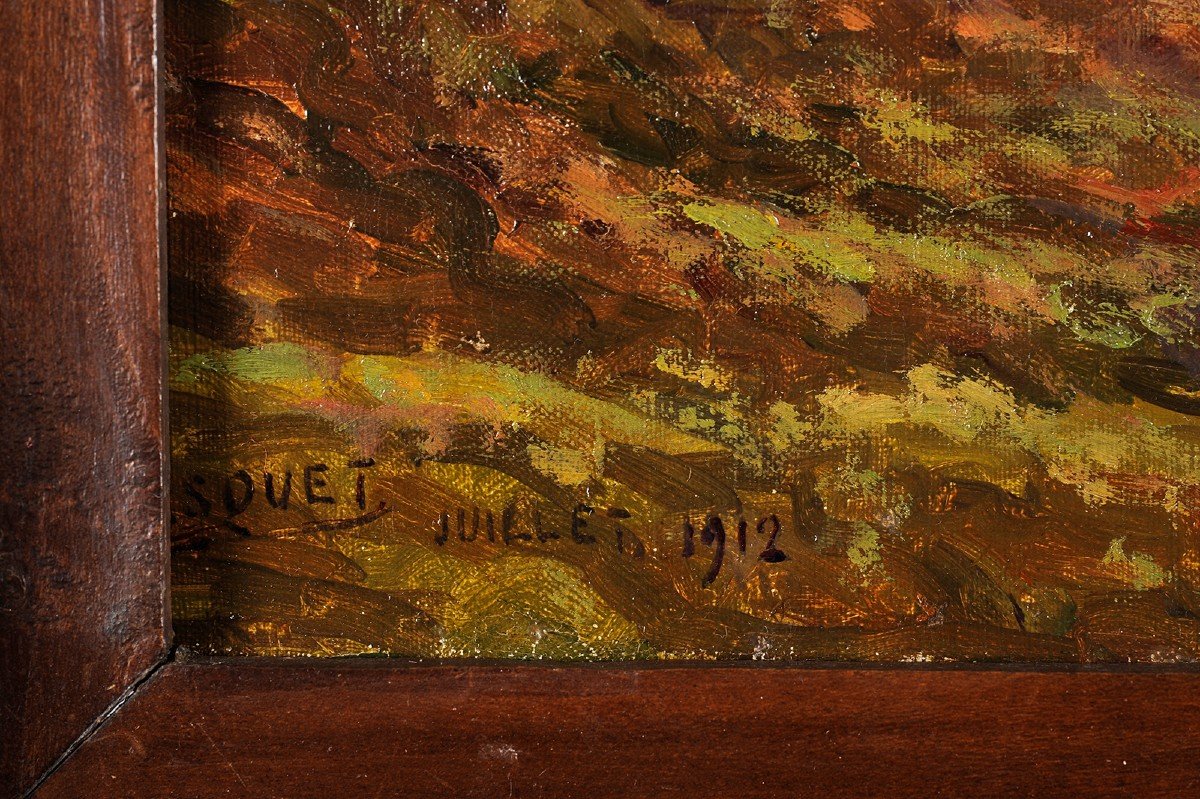
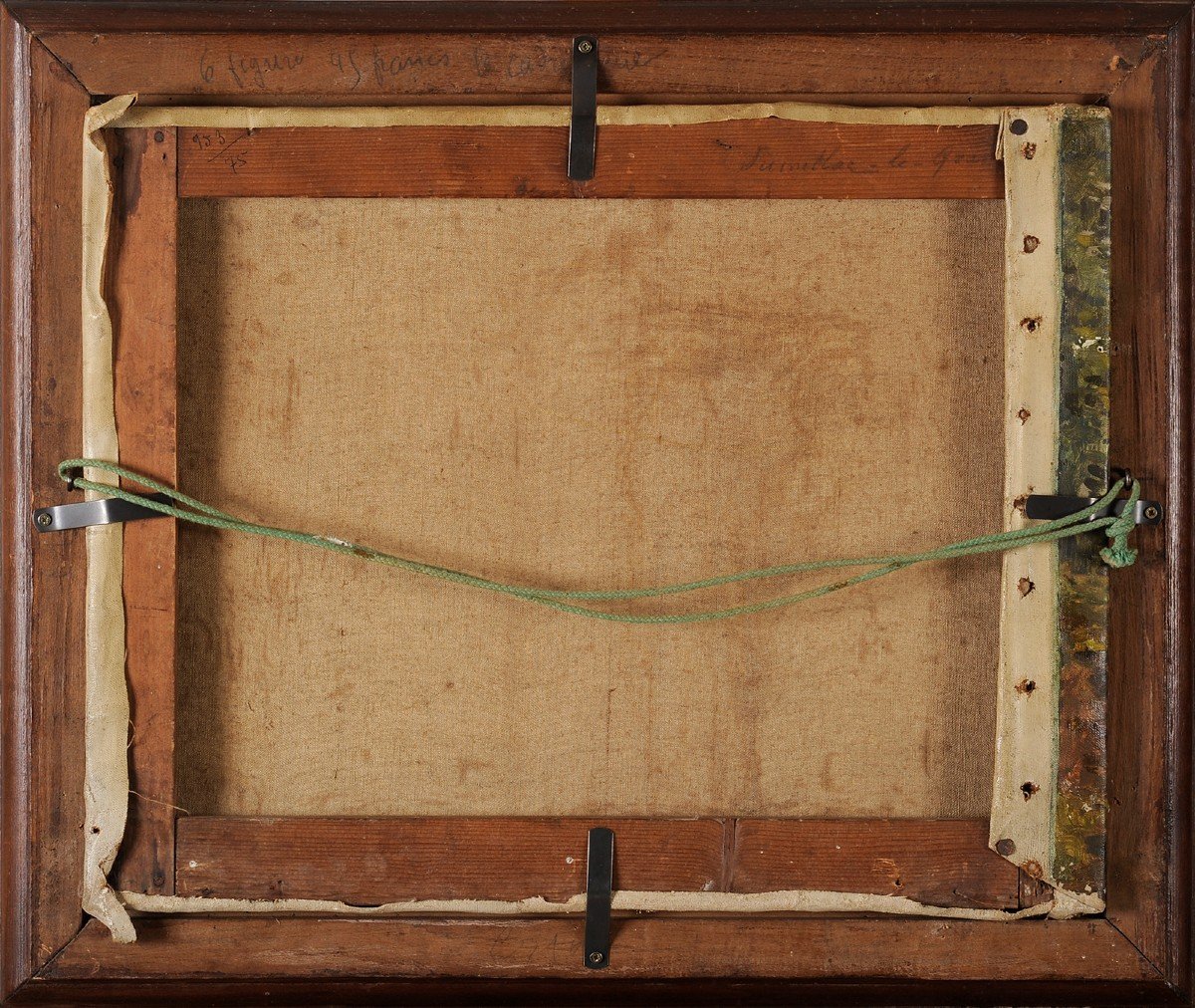








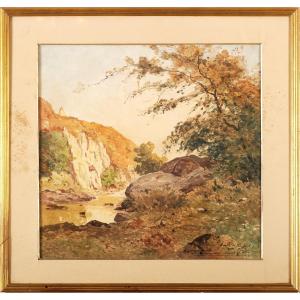










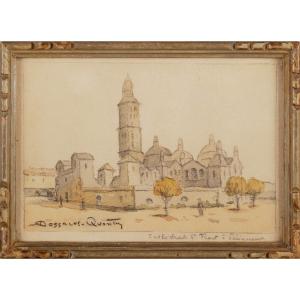




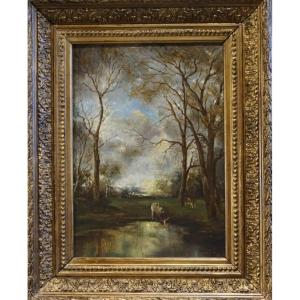
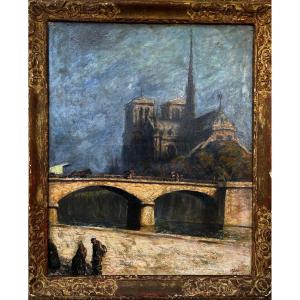



 Le Magazine de PROANTIC
Le Magazine de PROANTIC TRÉSORS Magazine
TRÉSORS Magazine Rivista Artiquariato
Rivista Artiquariato